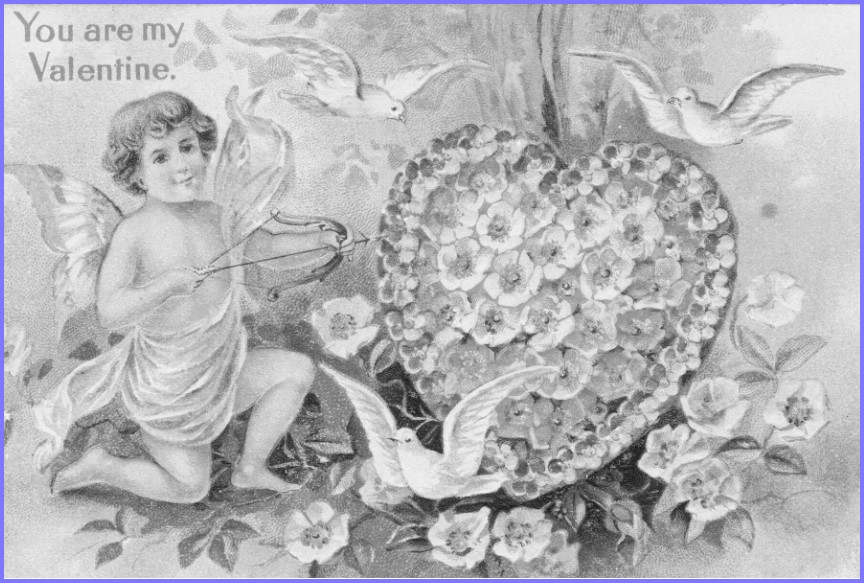Log in
Statistics
We have 477 registered usersThe newest registered user is гераскинс
Our users have posted a total of 48009 messages in 7050 subjects
THAT’S ENTERTAINMENT
CLICK ON ANY OF THESE LINKS TO FIND OUR EXTREME ENTERTAINMENT
UPDATED :
71 WGT TUTORIALS & 32 YOUNG46 TUTORIALS
CLICK HERE TO SEE OVER 100 YOUTUBE VIDEO TUTORIALS . FROM WGTers , WGT & YOUNG46 FORUM UPDATE
TO THE MANY WELCOME GUESTS . THIS FORUM IS NO LONGER A COUNTRY CLUB WEBSITE FOR A WGT COUNTRY CLUB . PLEASE FEEL FREE TO READ THE FORUMS.
THERE ARE MANY TOPICS OF INTEREST . OR NOT . THIS WEBSITE IS AN INFORMATION AND ENTERTAINMENT WEBSITE ONLY .
MUCH OF THE CONTENT IS ARCHIVES OF PURPOSES PAST .
THERE ARE SOME MORE CURRENT TOPICS .
REGISTRATION IS NOT NECESSARY TO READ THROUGHOUT .
REGISTRATION IS EASY AND FREE . THIS IS AN AD FREE WEBSITE . NOTHING IS EVER REQUESTED FROM REGISTERED MEMBERS .
REGISTRATION ENABLES COMMENTING ON TOPICS . POSTING NEW TOPICS . FULL ACCESS TO THE WEBSITE IMAGE HOST . WHICH IS A VERY COMPLETE AND CONVENIENT TOOL .
PLEASE ENJOY .
TIER & AVERAGE REQUIREMENTS
BASIC LEVEL AND AVERAGE REQUIREMENTS , AND SATURATION

WHILE YOUR HERE
WHILE YOUR HERE :
CHECK OUT THE INCREDIBLE PHOTOGRAPHY IN
MY SERIES
THIS USED TO BE THE HOME OF OUR WORLD CLOCK . WHICH CAN NOW BE FOUND IN ITS OWN FORUM ON THE MAIN PAGE ..
THERE ARE MORE WORLD CLOCKS INSIDE HERE .
WORLD CLOCK
FB Like
HISTORY FACTS * What did St. Valentine have to do with love? *
Page 1 of 1
 HISTORY FACTS * What did St. Valentine have to do with love? *
HISTORY FACTS * What did St. Valentine have to do with love? *
The Difference Between St. Valentine and Cupid
Each year on February 14, romantic partners exchange affectionate cards and sugary-sweet chocolates, all in the name of St. Valentine — and all while the iconic image of Cupid takes center stage. But who are these figures, and how did they converge for this sentimental holiday? From Cupid’s roots in Greek mythology to St. Valentine’s Christian symbolism, here’s how these two figures became the unlikely faces of love and Valentine’s Day.
Advertisement

The exact origin of the saintly namesake of Valentine’s Day is murky. According to one belief, St. Valentine was a third-century Roman priest who defied the Roman Empire’s stance against men marrying at a young age (it was thought that they should instead serve as soldiers). Valentine continued to perform marriages in secret, leading to his execution on February 14. Another belief portrays St. Valentine as a compassionate man who helped free persecuted Christians in ancient Rome. According to legend, he healed the local jailer's blind daughter and, before his death, sent her a note signed, "from your Valentine." Whether these were two separate figures or just one isn’t entirely clear, nor is whether they were actually historical characters and events or just myths. In records from the medieval era, for instance, there is no connection between St. Valentine and love or marriage. But regardless of how the figure became linked with romance, the association between St. Valentine and love has remained strong.
Advertisement
Advertisement

Today, we think of Cupid as a surreal cherubic figure, adorned with wings and armed with a bow and arrows. This iconic imagery is rooted in depictions of Eros, the Greek god of love. Initially depicted as a handsome youth, Eros underwent a transformation during the Hellenistic period (around 323 BCE to 31 BCE), evolving into the cherubic, winged child we recognize today. When the Romans adopted the deity, he became Cupid, a name derived from the Latin word for “desire.” The new likeness remained, as did Eros’ mischievous use of his arrows to arouse love or extreme passion in whomever happened to be struck by one.
Advertisement
Advertisement

While there is no single backstory for our modern celebration of Valentine’s Day, the holiday is often linked to the ancient Roman fertility festival of Lupercalia, which took place on February 15 and dates back to the sixth century BCE. In the fifth century CE, Pope Gelasius I abolished the pagan observance of Lupercalia and instead declared February 14 as a commemorative day for the martyrdom of St. Valentine — with no explicit mention of love, however. In fact, it wasn’t until several centuries later that Valentine’s Day’s romantic connotations emerged, sometime in the late 1300s, when English poet Geoffrey Chaucer wrote about the mating rituals of birds in his epic poem "Parlement of Foules." He wrote of “Seynt Valentynes day” as the day “whan every foul cometh ther to chese his make” — or when birds choose their mates.
Advertisement
Advertisement

Chaucer’s prose is believed to be the first mention of Valentine’s Day as a romantic holiday; from there, the association gained more traction. In the 1470s, an English woman named Margery Brews wrote to her fiancé John Paston and referred to him as “My right well-beloved Valentine” — a letter believed to be the oldest English-language valentine. The concept of Valentine's as a day for love was helped along not only by Chaucer, but by William Shakespeare, whose use of both Valentine’s Day and Cupid as romantic symbols further bolstered the idea in Britain. Shakespeare also considered Valentine’s Day a day for lovers, and associated Cupid with love. By the 16th century, Valentine’s Day and Cupid were established cultural symbols of love, and they eventually coalesced on greeting cards. At this time, cards were enormously popular across Europe, Valentine’s cards chief among them. By the mid-1800s, many Valentine’s Day cards featured imagery not far off from Chaucer’s whimsical vision of the day — birds and flowers in springtime — as well as frequent portrayals of the familiar winged, curly-haired Cupid.
Advertisement

Photo credit: [url=https://www.gettyimages.com/search/photographer?photographer=Fototeca Storica Nazionale.]Fototeca Storica Nazionale.[/url]/ Hulton Archive via Getty Images
Who Is St. Valentine?
The exact origin of the saintly namesake of Valentine’s Day is murky. According to one belief, St. Valentine was a third-century Roman priest who defied the Roman Empire’s stance against men marrying at a young age (it was thought that they should instead serve as soldiers). Valentine continued to perform marriages in secret, leading to his execution on February 14. Another belief portrays St. Valentine as a compassionate man who helped free persecuted Christians in ancient Rome. According to legend, he healed the local jailer's blind daughter and, before his death, sent her a note signed, "from your Valentine." Whether these were two separate figures or just one isn’t entirely clear, nor is whether they were actually historical characters and events or just myths. In records from the medieval era, for instance, there is no connection between St. Valentine and love or marriage. But regardless of how the figure became linked with romance, the association between St. Valentine and love has remained strong.
You may also like

Revealing Facts About 5 Celebrated Painters
5 Facts About England’s Elizabethan Era
Unforgettable Moments in Baseball History
Advertisement
Advertisement

Photo credit: Bettmann via Getty Images
Who Is Cupid?
Today, we think of Cupid as a surreal cherubic figure, adorned with wings and armed with a bow and arrows. This iconic imagery is rooted in depictions of Eros, the Greek god of love. Initially depicted as a handsome youth, Eros underwent a transformation during the Hellenistic period (around 323 BCE to 31 BCE), evolving into the cherubic, winged child we recognize today. When the Romans adopted the deity, he became Cupid, a name derived from the Latin word for “desire.” The new likeness remained, as did Eros’ mischievous use of his arrows to arouse love or extreme passion in whomever happened to be struck by one.
Advertisement
Advertisement

Photo credit: [url=https://www.gettyimages.com/search/photographer?photographer=Heritage Images]Heritage Images[/url]/ Hulton Archive via Getty Images
How Did Valentine’s Day Start?
While there is no single backstory for our modern celebration of Valentine’s Day, the holiday is often linked to the ancient Roman fertility festival of Lupercalia, which took place on February 15 and dates back to the sixth century BCE. In the fifth century CE, Pope Gelasius I abolished the pagan observance of Lupercalia and instead declared February 14 as a commemorative day for the martyrdom of St. Valentine — with no explicit mention of love, however. In fact, it wasn’t until several centuries later that Valentine’s Day’s romantic connotations emerged, sometime in the late 1300s, when English poet Geoffrey Chaucer wrote about the mating rituals of birds in his epic poem "Parlement of Foules." He wrote of “Seynt Valentynes day” as the day “whan every foul cometh ther to chese his make” — or when birds choose their mates.
Advertisement
Advertisement

Photo credit: [url=https://www.gettyimages.com/search/photographer?photographer=Kean Collection]Kean Collection[/url]/ Archive Photos via Getty Images
How Did Cupid Become the Face of a Day for St. Valentine?
Chaucer’s prose is believed to be the first mention of Valentine’s Day as a romantic holiday; from there, the association gained more traction. In the 1470s, an English woman named Margery Brews wrote to her fiancé John Paston and referred to him as “My right well-beloved Valentine” — a letter believed to be the oldest English-language valentine. The concept of Valentine's as a day for love was helped along not only by Chaucer, but by William Shakespeare, whose use of both Valentine’s Day and Cupid as romantic symbols further bolstered the idea in Britain. Shakespeare also considered Valentine’s Day a day for lovers, and associated Cupid with love. By the 16th century, Valentine’s Day and Cupid were established cultural symbols of love, and they eventually coalesced on greeting cards. At this time, cards were enormously popular across Europe, Valentine’s cards chief among them. By the mid-1800s, many Valentine’s Day cards featured imagery not far off from Chaucer’s whimsical vision of the day — birds and flowers in springtime — as well as frequent portrayals of the familiar winged, curly-haired Cupid.
 Similar topics
Similar topics» HISTORY FACTS *How long was history's shortest war? *
» HISTORY FACTS * The most famous typos in history *
» HISTORY FACTS * The best history movies from 2023 *
» HISTORY FACTS * The loudest sound in history *
» HISTORY FACTS * History's most famous pets *
» HISTORY FACTS * The most famous typos in history *
» HISTORY FACTS * The best history movies from 2023 *
» HISTORY FACTS * The loudest sound in history *
» HISTORY FACTS * History's most famous pets *
Page 1 of 1
Permissions in this forum:
You cannot reply to topics in this forum
 Events
Events
















































































» INTRO TO WORD SMARTS
» PINTEREST ICONIC COMIX
» HISTORY FACTS * Gold wasn't always the top Olympic medal *
» Word Genius Word of the day * occlude *
» JULY NATIONAL CELEBRATION DAYS JULY 26 2024
» QUIZ TREAT QUIZ *Which mammal has the most powerful bite? *
» QUIZ TREAT ANSWER PAGE
» NAT GEO * The 2024 Olympics will likely be the hottest ever *
» NAT GEO * Sharks found with cocaine in their systems *
» WISE TRIVIA QUIZ *What was the first song ever played on the radio? *
» WISE TRIVIA ANSWER PAGE
» E.S.Etaski * Sister Seekers Book 10 now available everywhere! *
» WORD DAILY Word of the Day: * literatim *
» JULY NATIONAL CELEBRATION DAYS JULY 25 2024